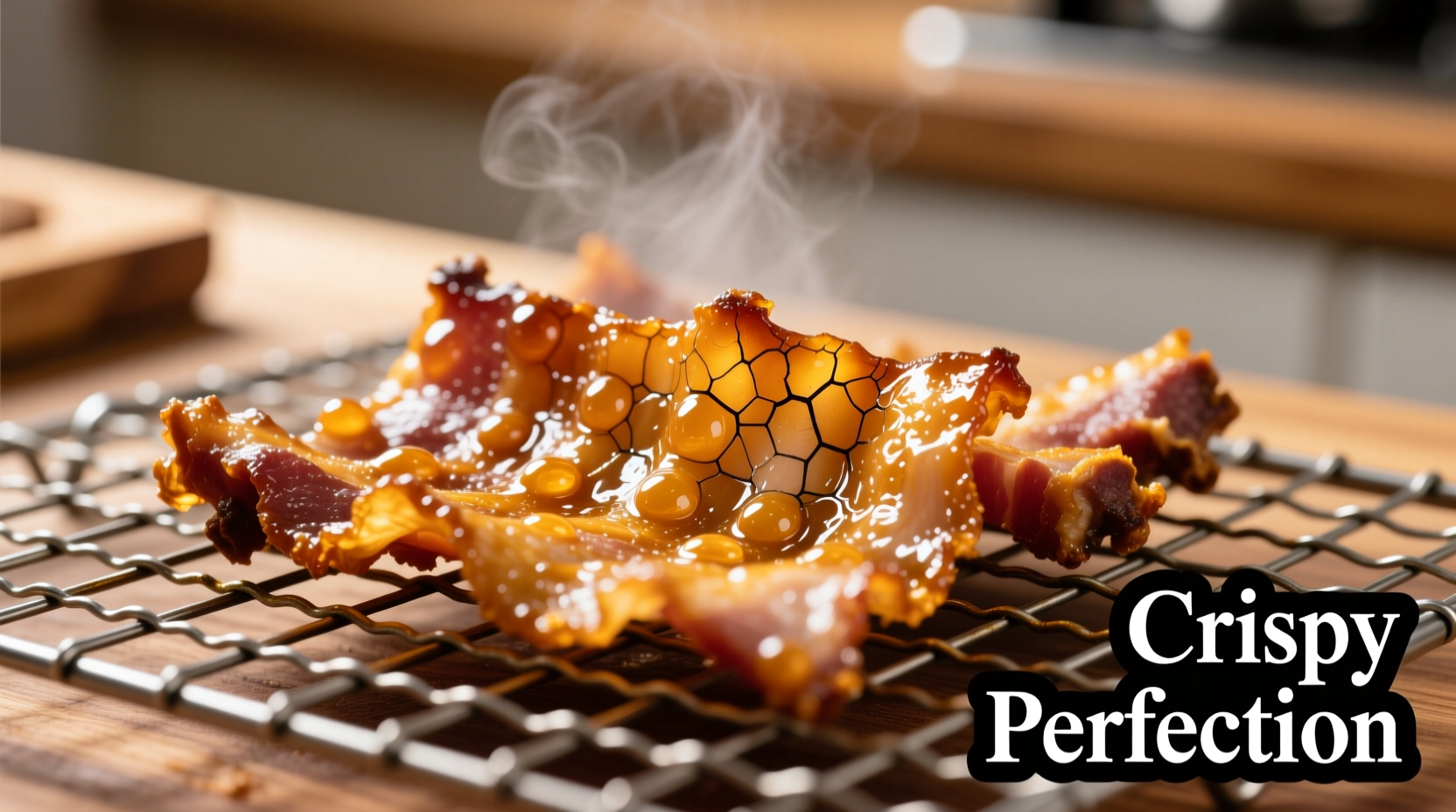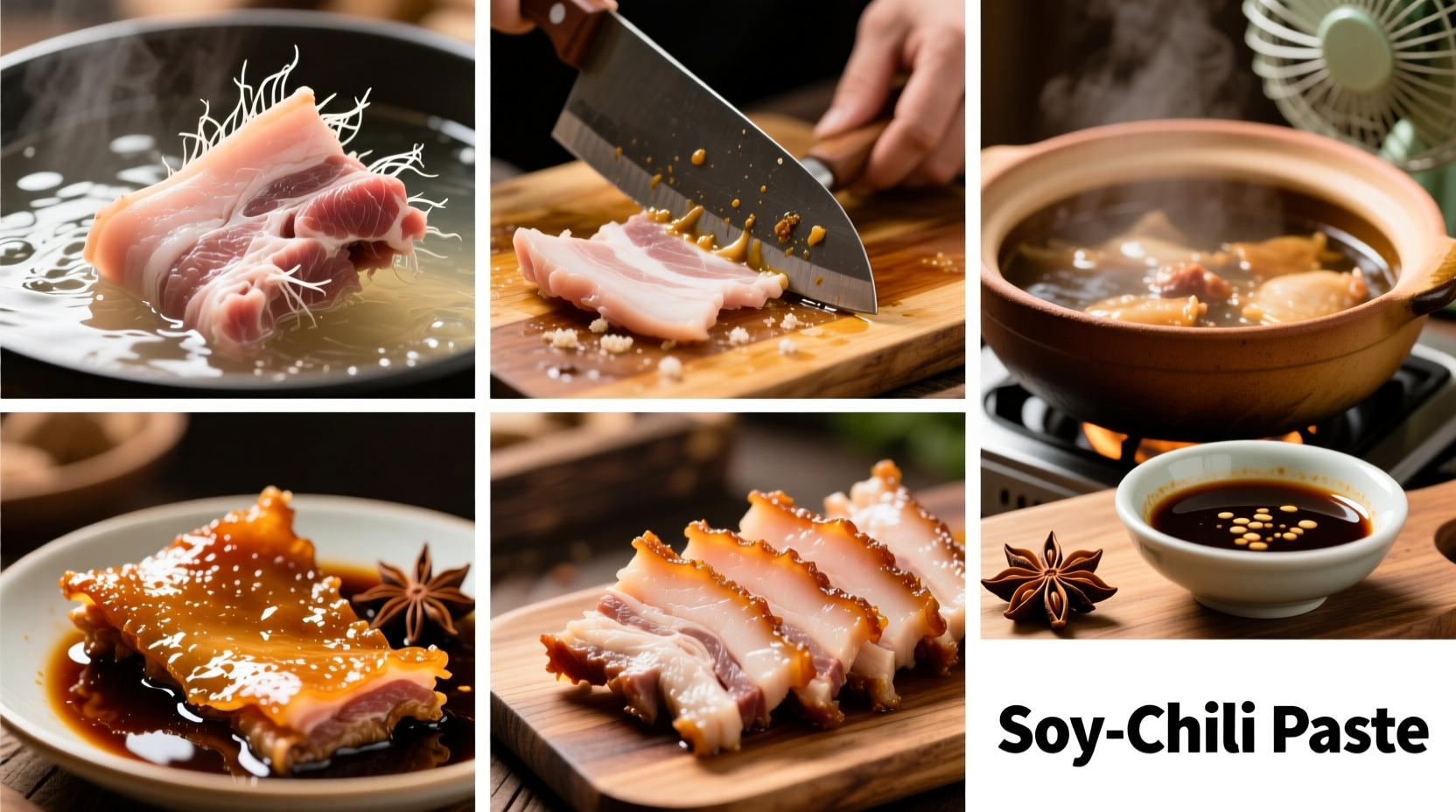Why Pork Skin Cooking Requires Special Techniques
Pork skin contains abundant collagen that transforms into gelatin when cooked properly, creating that signature crisp texture. Unlike other meats, pork skin needs specific preparation to render fat and dry the surface. According to USDA Food Safety and Inspection Service guidelines, pork should reach an internal temperature of 145°F (63°C) with a 3-minute rest time for safe consumption, though skin preparation requires different temperature approaches.Understanding the science helps you avoid common pitfalls. When moisture evaporates from the skin surface during cooking, it creates steam that lifts the skin away from the fat layer. Proper scoring allows this steam to escape while promoting even crisping. Professional chefs use this knowledge to achieve consistent results every time.
Essential Preparation Steps for Perfect Results
Cleaning and Drying
Start with thoroughly cleaned pork skin. Remove any remaining hair using a torch or sharp knife. Then, scrub the skin with coarse salt and vinegar to eliminate impurities and reduce moisture content. The critical step many home cooks miss: air-drying in the refrigerator for 12-24 hours. This draws out moisture that would otherwise prevent crispiness. Place the pork skin-side up on a wire rack over a tray to allow air circulation on all sides.
Scoring Technique Matters
Use a very sharp knife or razor blade to score the skin in a diamond pattern, about 1/8 inch apart. Don't cut into the fat layer - just through the skin itself. This creates channels for steam to escape during cooking while allowing the skin to expand evenly. According to culinary research from the Culinary Institute of America, proper scoring increases surface area by 300%, dramatically improving crispness.
| Cooking Method | Time Required | Crispness Level | Best For |
|---|---|---|---|
| Roasting | 2-3 hours | ★★★★☆ | Large cuts, traditional crackling |
| Frying | 8-12 minutes | ★★★★★ | Small portions, chicharrón |
| Boiling + Roasting | 3+ hours | ★★★☆☆ | Extra-thick skin |
| Air Frying | 25-35 minutes | ★★★☆☆ | Small batches, quick preparation |
Step-by-Step Guide to Crispy Pork Skin
Method 1: Oven Roasting (Best for Large Cuts)
- Preheat oven to 425°F (220°C) with rack in upper third
- Pat skin completely dry with paper towels
- Rub skin with 1 tablespoon coarse salt (this draws out moisture)
- Place skin-side up on a wire rack over a baking sheet
- Cook for 30 minutes at high heat, then reduce to 325°F (160°C)
- Continue cooking 1.5-2 hours until golden and crisp
- For extra crispness, broil for 2-3 minutes (watch carefully)
- Rest 10 minutes before breaking into pieces
Method 2: Double-Cooking for Ultimate Crispness
Professional chefs often use a two-stage process for perfect results. First, simmer the pork skin in salted water for 45-60 minutes until the skin is tender but not falling apart. Drain thoroughly and air-dry overnight in the refrigerator. Then roast at 400°F (200°C) for 45-60 minutes until golden and bubbling. This method, documented in traditional Chinese culinary texts dating back to the Ming Dynasty, ensures the skin becomes completely dry before crisping.

Troubleshooting Common Problems
Soggy or Chewy Skin
This usually happens when moisture remains in the skin. Solution: Increase drying time in the refrigerator or add more salt before cooking. If cooking in humid conditions, extend the initial high-heat roasting phase by 10-15 minutes.
Burning Before Crisping
If the skin burns before becoming crisp, your oven temperature is too high. Solution: Lower the temperature by 25°F (15°C) and extend cooking time. Cover the meat portion with foil if needed to prevent overcooking while the skin finishes crisping.
Serving and Storage Tips
For best texture, serve pork skin immediately after cooking. If you must store it, keep in an airtight container at room temperature for up to 2 days. To revive stale pork skin, place in a 350°F (175°C) oven for 5-8 minutes. Never refrigerate cooked pork skin as moisture will ruin the crispness.
Pair crispy pork skin with traditional accompaniments like Chinese five-spice salt, Mexican salsa verde, or British apple sauce depending on your cultural preparation method. The contrast between the crunchy skin and tender meat creates an irresistible textural experience that elevates any pork dish.











 浙公网安备
33010002000092号
浙公网安备
33010002000092号 浙B2-20120091-4
浙B2-20120091-4